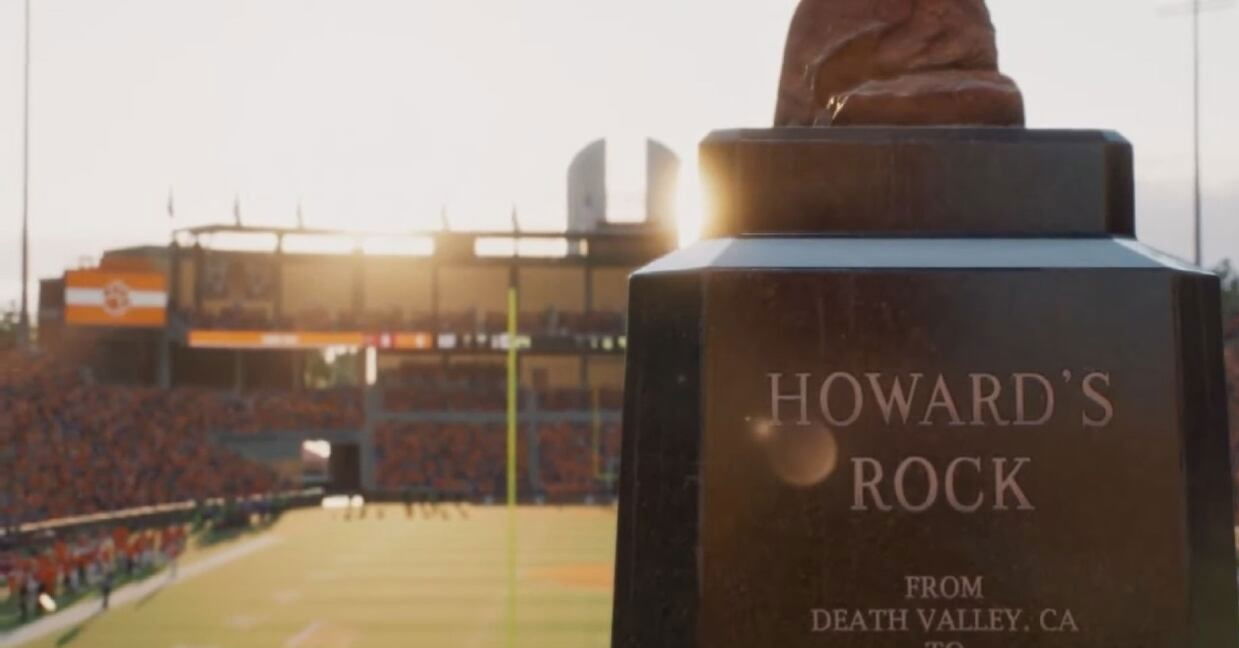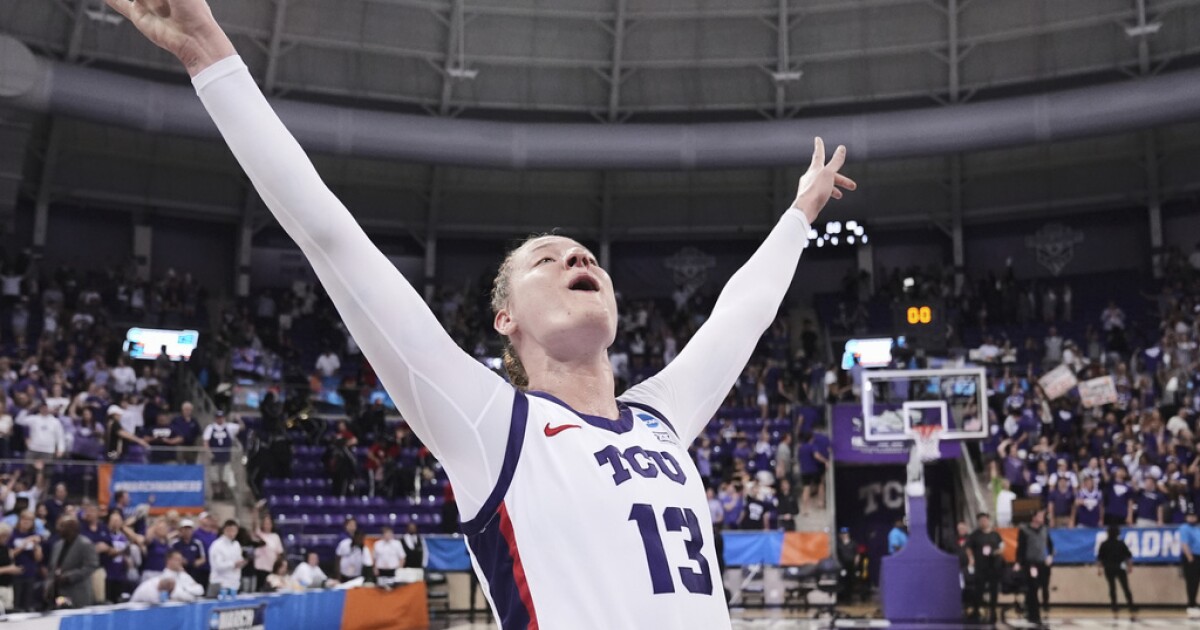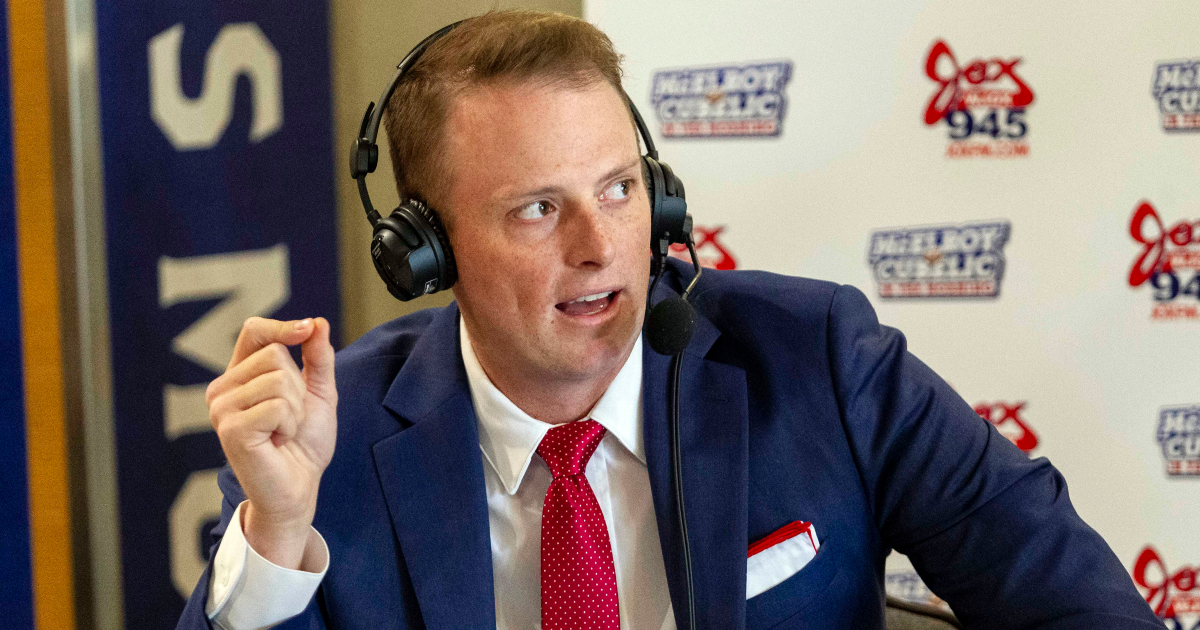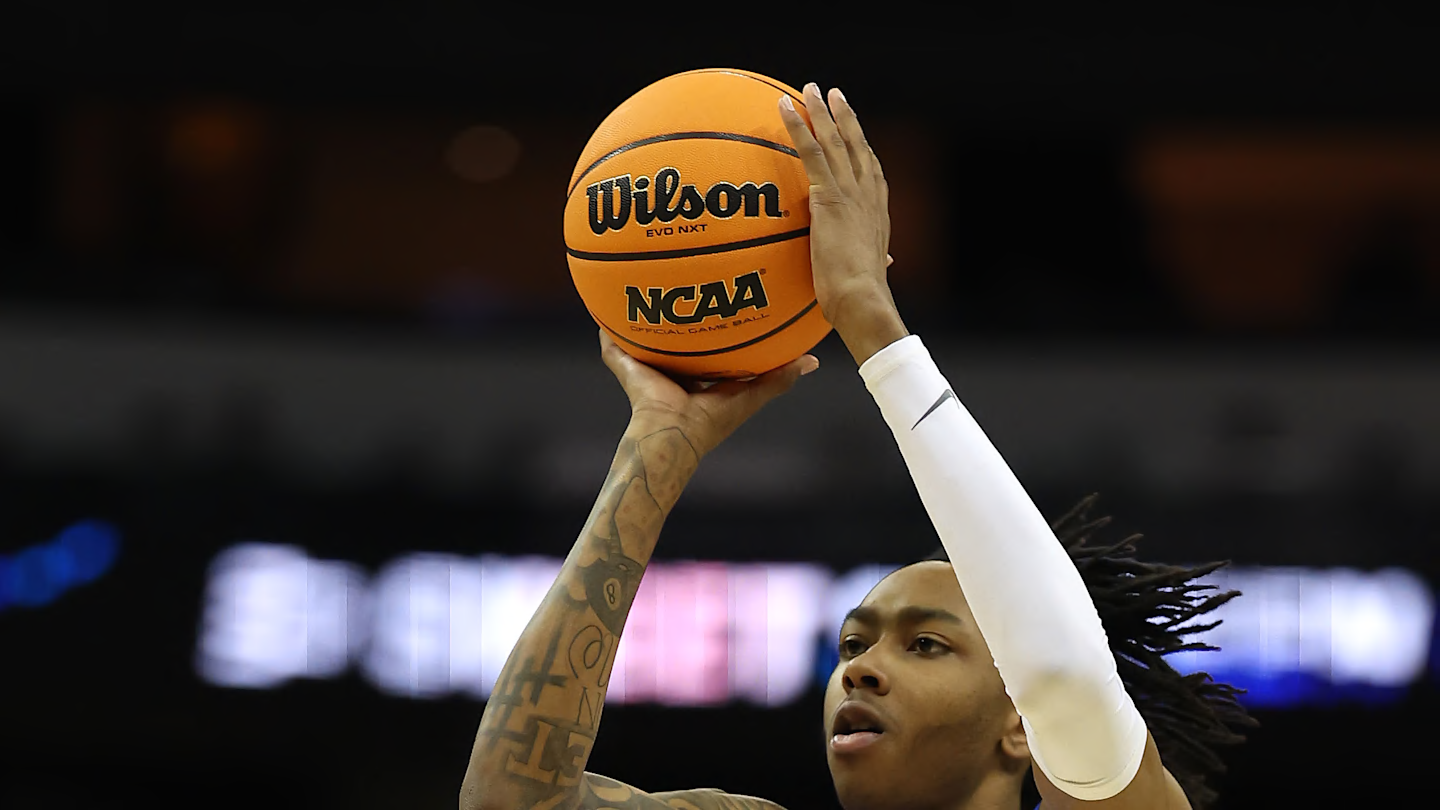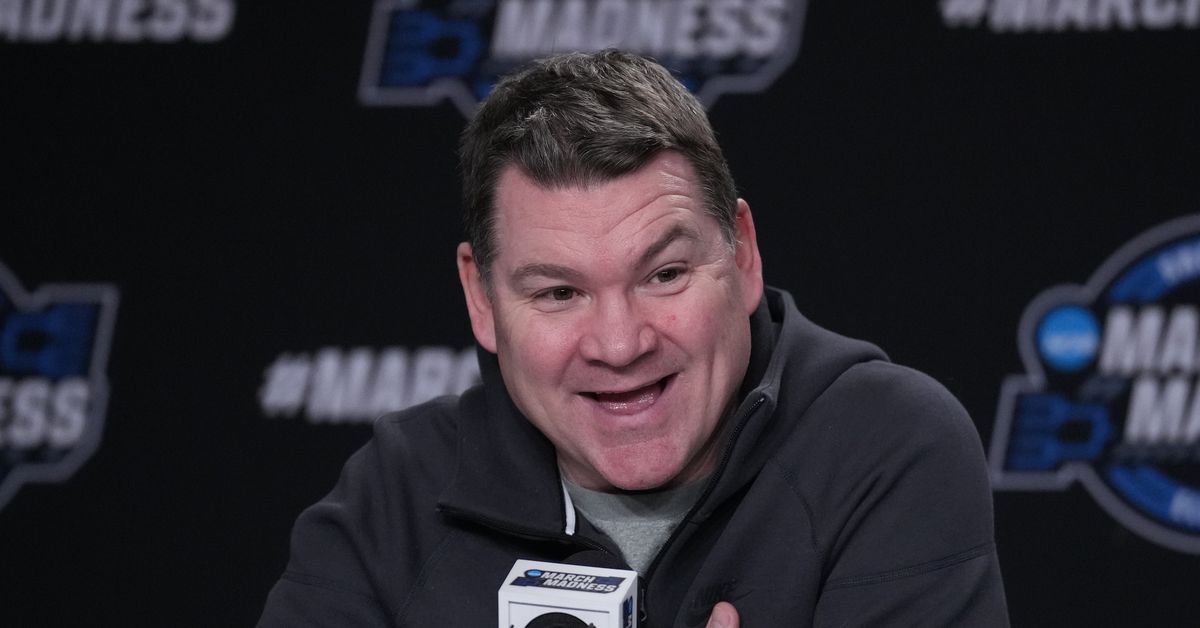Following his team’s loss to Duke in the Sweet 16 in late March, Tommy Lloyd went through the customary postgame press conference where he was accompanied by Jaden Bradley, Caleb Love and Henri Veesaar. Only one of those players is back for Arizona, one off to begin his pro career and the other transferring out.
The Wildcats only return four scholarship players from last year’s 24-13 team, with Love one of three setting out on a pro career and Veesaar part of a quartet set to play elsewhere in college next season. In their place are seven newcomers, including the largest freshman class of the Lloyd era.
Lloyd and his staff constructed this roster as the NIL market for college basketball exploded this spring, with numerous players landing 7-figure deals ahead of restrictions that would come with the NCAA/House settlement that was approved last week. Throw in putting together another arduous nonconference schedule, while hiring a new assistant and getting set to coach Team USA’s U19 squad in the FIBA World Cup and there hasn’t been much downtime since the 2024-25 season ended.
“It’s college basketball, there’s a lot of moving parts in an offseason now,” Lloyd said Thursday, his first public comments since the Sweet 16 loss. “It makes for a pretty eventful few months, but you work yourself through it, and you’re trying to do the best job to set your next team up for success. You’re all in, fully engaged, from basically April through through May into June. And then hopefully, by that point you’ve kind of got a little more certainty on how things are going to look, and you’re ready to operate accordingly.”
Lloyd has led Arizona to 112 wins in his four seasons, reaching the NCAA Tournament each year and making three trips to the Sweet 16. The Wildcats finished fourth in their first season in the Big 12 Conference and reached the conference tournament final where they lost to NCAA tourney finalist Houston.
Here’s what Lloyd had to say about the various “moving parts” for Arizona specifically and college basketball in general:
The 2025-26 roster
Back for next season are seniors Tobe Awaka, Jaden Bradley and Anthony Dell’Orso and junior Motiejus Krivas, who combined to play 37.3 percent of the minutes last season and produce 35.1 percent of the scoring. All four committed to returning shortly after 2024-25 ended, though Bradley did go through the NBA Draft process for the second year in a row.
“Those are guys that they expressed a real strong desire to come back,” Lloyd said. “So we just sat down with them and figured it out. The formula, if you can get three or four good returning players, that part of your rotation back, I mean, I think that’s a great foundation to build on. And I think we’ve kind of been able to do that each of the past four seasons. We’ve had enough retention and added pieces.”
Most of those pieces are teenagers, as Arizona has signed six prep or international recruits and has a commitment from one other, Russian-German wing Ivan Kharchenkov. The No. 3 recruiting class in the country, behind Duke and Houston, is led by McDonald’s All-Americans Brayden Burries and Koa Peat.
At least one freshman will start the season opener Nov. 3 against defending national champion Florida in Las Vegas, if not more, which would be a first for Lloyd. Carter Bryant, who started five games last season, is the only freshman to do so under Lloyd, and with the expected heavy reliance on first-year players the potential for growing pains will be high.
“I think, as a coach no matter what the level of experience you have, you anticipate there’s gonna be growing pains, and that’s just part of the process,” Lloyd said. “We’ll see how seasoned and how ready some of those freshmen are, but we’re also going to count on a really good core group of returners. We got a lot of guys that have a lot of good experience and are good players and have great leadership qualities. So I think it’s going to be a good mix of young guys and old.”
Arizona has only added one player from the transfer portal, former Harvard guard Evan Nelson, a Tucson native who replaces Conrad Martinez—now at High Point—as the backup point guard. Martinez averaged five minutes a game, resulting in Bradley playing more than 34 per night, and it may have led to some fatigue during the season.
“We knew we needed more help in the backcourt,” Lloyd said. “We had a good idea Brayden was coming. There’s no doubt in my mind Brayden is a point guard, he can do a lot of point guard things, but we also wanted a little bit more experience. Evan was available, and our staff brought him to me. It doesn’t take you long, you talk to Evan one time, and you see his character. You see his seriousness. And the thing that I really saw was just his Tucson roots are real, and his love for Arizona basketball is real. And to me, when you have a good player that has that, you got to pay attention to it. We’re excited for what he can add to this team.”
The Wildcats have room for up to three more scholarship player and Lloyd didn’t rule out adding more—“we’re always looking to add a piece here and there; I think we’re down the line with a thing or two—but if that happens it would be to provide depth rather than be a starter.
All of the top-tier transfers were plucked off the market in April and May, with many collecting large bags. Lloyd expected some increase in player compensation with changes on the horizon but he was surprised at how much it went up.
“I think everybody thought that there might be a little bump, but to the level that it did bump, I don’t think anybody could have predicted that,” he said.
The House settlement
On June 6 a federal judge signed off on a settlement in the House vs. NCAA case, which has ushered in a new era for college athletics with roster limits and revenue sharing coming on July 1. Athletic director Desiree Reed-Francois has said Arizona will share the maximum $20.5 million in revenue with student-athletes but declined to break down how that money will be distributed to different sports.
Men’s basketball is expected to get the second-largest piece of the UA pie, behind football, and Lloyd’s recent contract extension includes a provision that enables him to create “an annual budget for revenue sharing and other resources.”
Asked about the settlement Thursday, Lloyd treated it as just one of many changes in the ever-changing college landscape.
“I don’t form hard opinions on this stuff,” he said. “I’m a coach, and not that I’m not smart enough to figure it out or think about it. I’m somebody who, let me know what the rules are, and I’m going to figure out how to work with the rules and within the rules to make our program successful. So I just want to know what the parameters are. That’s all I care about.
“I’m not going to sit there and say, well, I disagree with that, because what does that really do in that moment for me? No one cares if I disagree with something, and I’m right. If our team is losing, no one cares. My team is judged on our performance, and so I got to focus on how to make our team perform better. We have a staff that’s that’s a lot smarter than me within this athletic department at figuring that stuff out and I’m obviously going to follow their lead.”
One area that he was heavily in favor of was the late provision that would in effect grandfather existing players on a roster from the new limits. Men’s basketball is going down to a 15-player cap after having 20 on the 2024-25 roster, nine of them walk-ons.
The schedule
Other than Gonzaga (for obvious reason) and NAU (when son Liam was on the team), Lloyd has been willing to play anyone and everyone during nonconference play. But this year he may have outdone himself, crafting by far the toughest slate of his tenure and maybe the most difficult for Arizona in more than 20 years.
“I think you guys say that every year,” Lloyd said. “Obviously it’s a great schedule.”
As mentioned above, Arizona begins the 2025-26 campaign against Florida at T-Mobile Arena in Las Vegas, the former home of the Pac-12 Tournament where the Wildcats have had so much success. Eleven days later is a clash with UCLA at the Intuit Dome in Las Vegas, and the following week is a trip to UConn.
Throw in December Saturday games against Auburn (at McKale Center), Alabama (Birmingham) and San Diego State (Phoenix) and there are plenty of chances for the Wildcats to challenge themselves. Winning a few would be nice, too, unlike last season when they were 6-5 in nonconference play with four of those losses to future NCAA tourney teams.
“It’s a great opportunity for our program, and we played a tough (schedule) I think we have almost every year,” Lloyd said. “For our first few years here we kind of hit it right, and we won some of those games. Last year we didn’t, but we still ended up okay. So I think testing your team is important. Obviously we want to win some of those games. We feel like if you’re able to win some of those games, things maybe feel a little bit different. We feel like we’ve got the right formula. We’re going to continue to push the envelope with our schedule and challenge our team, and hopefully it’s a team that’s prepared to play good basketball in March.”
A new assistant
Steve Robinson, who had been on Arizona’s staff since Lloyd arrived, retired in April after 42 years of coaching. That included 18 seasons at North Carolina before joining the Wildcats as well as head coaching stints at Tulsa and Florida State.
“We had a great retirement party for him a few days ago, and he just, he knocked it out of the park,” Lloyd said of the 67-year-old Robinson. “Just a great man. So thankful that he was by my side to start out my head coaching career. He’s got great perspective, and he’s seen so many things. He really gave me space to be myself and kind of develop and what I needed to be as a head coach. He didn’t come in and try this really squelch anything, but he also, he told me in certain moments to think about certain things. So I really, really appreciated his wisdom.”
Replacing Robinson on the staff is Brandon Chappell, who comes to the UA after three seasons at Texas. The 41-year-old also coached at UNLV and Lamar and was a grad assistant at NAU when UA assistant Jack Murphy was the Lumberjacks’ head coach.
“Brandon is somebody we kind of had our eye on for a while,” Lloyd said. “You guys are gonna love him. He’s got the juice, he’s got the energy. He has great energy, he’s got great character. He wants to be part of a staff, so he’s got a great team essence about him. And he’s a good coach, and he’s excited to become a better coach. I’ve been really excited about the energy that he’s going to bring.”
Lloyd said all of his responsibilities away from the court this spring—including Liam’s wedding—has prevented him from being able to work closely with Chappell.
“We really haven’t got to connect, like, on the day-to-day level on the court for an extended period of time,” he said. “I’m looking forward to that when I get back this summer, is being with him on the court every single day and kind of learning for each other and getting him ready to roll, because I think he’s going to be a think he’s going to be a significant contributor in a lot of assets.”
Team USA redux
Lloyd met with the media ahead of a trip to Colorado Springs, where this weekend he began the process of assembling his next Team USA squad. A year after leading USA to a gold medal at the 2024 FIBA U18 AmeriCup in Argentina he’s back for a second go-around, this time with the U19 squad that will compete in the FIBA U19 World Cup in Switzerland.
“I feel a little bit more comfortable this go around, having been through it one time, and we’ll see if that helps,” said Lloyd, whose U18 team went 6-0 with every win by a blowout.
Lloyd and his Team USA staff, which includes Texas Tech coach Grant McCasland, have in camp a mix of existing college players, incoming freshmen and Class of 2026 prospects. The middle group includes UA signee Koa Peat, who has played on Team USA squads at the U16 and U17 level.
“Koa, he’s a veteran of FIBA basketball, USA basketball,” Lloyd said. “But Koa, he’s gonna have to earn his way on the team like everyone else. There’s a lot of other good guys that he’s going to be competing with. The tryouts are gonna be tough. You got to go from 30 to 12.”
Lloyd said USA Basketball told him that roughly 38 percent of players who try out for a team but get cut still end up getting drafted. That was the case for ex-Wildcat Dalen Terry, who attended a U19 training camp in 2021 but didn’t make the team.
“You’re looking at these young men, older kids, whatever you want to call them, that have been the best of the best their whole life at what they do,” Lloyd said. “And now they’re put in a situation where they walk in a room and over 50 percent of them are going to be told, here’s a ticket to go home. So it makes for a really interesting atmosphere. But it’s really cool because these kids are kind of able to put away maybe some of the bravado, and they have to get out there and then compete.”




